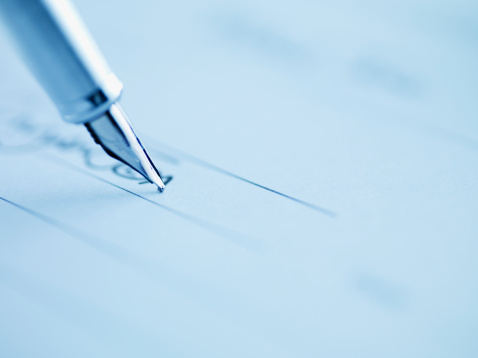Here’s an Easy Way to Put Ink in a Calligraphy Pen
When you’re starting to learn how to put ink in a calligraphy pen, it can be helpful to understand how the nib works. The pen’s nib is composed of two halves, which are separated by the curving part of the barrel. As you push the pen down onto the paper, the two halves of the nib will separate and move inward. While the ink will flow through the tip, you should not press too hard at the base of the nib. It will lead to messy work and a leaky nib.
Use a Pipette or Eyedropper
When you’re ready to fill your calligraphy pen, you can use a pipette or eyedropper. Dip the pipette into the ink barrel or recipient. Squeeze it to transfer the ink. Insert the grip section of the pen into the cartridge. The nib should be pointed downward so that ink will flow out of the feed. It will ensure a perfect imprint on the paper.
Use a Paintbrush
You can use a paintbrush to fill your calligraphy pen. Before filling your cell, make sure you have the ink in the paintbrush. It will make it easy to load the nib with ink and prevent the ink from being drawn onto the bill. If the ink chamber is empty, the ink will automatically fill the nib.
To fill a calligraphy pen, you should first open the ink cartridge
If the cell has a cap, you can screw the cap back onto the pen. Once the ink is inside the barrel, you can then turn the nib of the calligraphy handicraft pen upside down. By doing this, you can control the flow of the ink. You can then start writing.

fountain pen on paper with ink text closeup
Depending on the calligraphy pen you have, you may need to use a paintbrush to fill it. It would be best to press the ink into the brush and then hold the pen vertically. Press the ink cartridge into the nib unit to fill a calligraphy pen with ink. Alternatively, you can also use a paintbrush to put in ink.
You can use an eyedropper or a pipette to fill a calligraphy pen. Dip the pipette into the ink recipient or the ink barrel. Press down on the nib to release the ink. The beak is exceptionally sharp and must be held in place with equal pressure. A good grip will help you apply the ink evenly. It would help if you also took the time to clean the refill mechanism.
Using a paintbrush to fill a calligraphy pen is an alternative method to filling a pen. When using a paintbrush, you should ensure that the ink is loaded into the brush. After that, you should put the nib of the calligraphy pen in contact with the ink blob. The nib will automatically suck in ink when the ink chamber is empty, but it’s not enough to make it work.
To fill your calligraphy pen with ink:
- Use an eyedropper or a pipette.
- Dip the pipette into the ink barrel and squeeze to transfer the ink.
- Screw-in the grip section and attach the nib.
It’s essential to hold the nib in the grip section while filling it. Keeping it in this position will help the ink flow into the feed.
The nib is another vital part of the calligraphy pen. A manga nib will be the thinnest stroke. A semi-flexible nib will bend or flex, but a fine-pointed nib will work better. You’ll need to practice this for a few weeks until you’re comfortable with the pressure you need to exert. If you’re not yet ready to try a dip pen, it will help to get used to writing with it.

